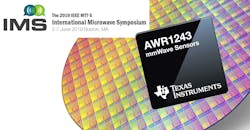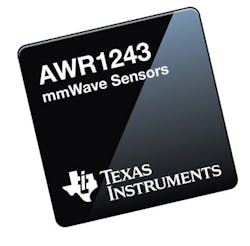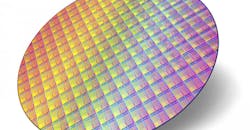Semiconductors are the active building blocks for many electronic systems, and continuing advances in semiconductors have fueled the recent growth of RF/microwave commercial markets, especially in 5G cellular communications networks and wirelessly connected vehicles. High levels of integration are enabling complete subsystems such as transceivers to be contained within a single integrated circuit (IC). Meanwhile, to boost signals for transmission, gallium-nitride (GaN) processes are opening the ways for higher and higher power levels at high frequencies.
Many of the RF/microwave industry’s leading semiconductor suppliers are gathering at the upcoming 2019 IEEE International Microwave Symposium (IMS) and its company exhibition at the Boston Convention and Exhibition Center from June 2-7, 2019. This is an opportunity for members of the RF/microwave industry and interested visitors from adjacent industries, such as medical, communications, and transportation electronic systems suppliers, to learn about the current state of the art in high-frequency electronics while walking from one exhibition booth to another.
Anokiwave (Booth 223) will be one of the semiconductor innovators on hand, showing that silicon is not dead, and has not yet been replaced by more expensive III-V semiconductor processes such as GaN or gallium arsenide (GaAs). The firm’s representatives will present a collection of its silicon (Si) CMOS process for ICs for 5G, satcom, and radar applications.
Though some of these ICs are familiar active components (e.g., amplifiers), many are components made smaller using active circuitry, such as active antennas. For example, model AWMF-0142 is an active-antenna-array IC intended for 5G phased-array applications from 24.25 to 27.50 GHz. It contains four transmit/receive antenna elements with 5-b phase control and 5-b gain control to perform beamsteering operations.
The half-duplex antenna provides 23-dB gain and +10 dBm output power during transmit mode and 26-dB gain with 5-dB noise figure during receive mode. The innovative IC includes gain compensation over temperature and temperature reporting. It runs on +1.8 V dc and is supplied in a 6- × 6-mm QFN package. The IC is backed by the AWA-0142 5G developer’s kit.
Also strong in Si with its VDMOS and LDMOS power transistors capable of power levels to about 600 W through 3 GHz, Polyfet RF Devices (Booth 224) will show what it can do with GaN, too, displaying devices and evaluation boards for several of its GaN-on-SiC power transistors. For example, its model GX4002 is a GaN-on-SiC power transistor for applications from 1 MHz to 3 GHz. Driven by +28 V dc, it provides 70 W linear output power with 55-percent drain efficiency and 11-dB gain.
For those with a higher-voltage supply, model GX4442 is a power transistor also fabricated with a GaN-on-SiC process, but for +48-V dc supplies. It can be used in circuits from 1 MHz to 2.5 GHz, delivering 160 W output power with at least 12-dB gain and 55% typical drain efficiency. Both power transistors are supplied in RoHS-compliant, thermally enhanced metal-flange packages.
For 2019 IMS exhibition visitors looking for higher levels of integration, one of the semiconductor developers leading the charge into mmWave frequencies, and long a familiar name in electronics, is Texas Instruments (Booth 1272). The firm will be exhibiting a sampling of its ICs for short-haul 5G mmWave links, for autonomous vehicles, and even for an increasing number of Internet of Things (IoT) applications targeting smart buildings and smart cities.
Self-driving vehicles will rely heavily on front-, rear-, and side-looking radars to move safely through traffic and into parking spaces, and devices such as the AWR1243 frequency-modulated, continuous-wave (FMCW) transceiver IC (Fig. 1) will provide communications at mmWave frequencies from 76 to 81 GHz for the great deal of short-range communications that will be required by futuristic vehicles and their many radar systems. The IC contains a phase-locked loop (PLL), receiver, and transmitter, with four receive channels and three transmit channels for full coverage.
1. This compact FMCW transceiver IC operates from 76 to 81 GHz in support of 77-GHz automotive radars. (Courtesy of Texas Instruments)
If that’s not enough integration for a single chip within a 10.4- × 10.4-mm flip-chip BGA package, the company is also expected to show its AWR1843 single-chip transceiver for automotive radar applications over the same frequency range. It’s packed into the same package. but also includes an Arm processor, digital signal processor (DSP), generous memory, and a host of monitoring functions.
For “smart highway” designers, NXP Semiconductors (Booth 548) will be in Boston showing many of its highly integrated devices, such as its model TEF5100 vehicle-to-everything (V2X) dual RF transceiver for IEEE 802.11 Wi-Fi wireless connectivity. The IC scales down the level of integration somewhat by using direct conversion for both transmission and reception, but it supports dual-channel operation with independent on-board frequency synthesizers. The transceiver is suitable for use at frequency bands of 0.76, 2.4, 5.4, 5.8, and 5.9 GHz with bandwidths to 20 MHz. For those seeking higher-frequency operation, the firm will be conducting in-booth demonstrations of solutions for 5G infrastructure systems at frequencies from below 6 GHz to as high as 40 GHz.
WIN Semiconductors (Booth 772) will inform visitors of its latest semiconductor foundry and test services, to fabricate and characterize both GaAs and GaN devices (Fig. 2). Servicing customers with multiple fabrication facilities, WIN offers GaAs heterojunction bipolar transistors (HBTs), pseudomorphic high-electron-mobility transistors (HEMTs), and GaN foundry services for monolithic-microwave-integrated-circuit (MMIC) devices. It’s the world’s largest GaAs foundry as well, also providing layout support and extensive test and measurement services.
2. WIN Semiconductors will be on hand at IMS to discuss its semiconductor foundry and test services targeting GaAs and GaN devices.
Cree will be at the 2019 IMS to inform visitors about its high-power Wolfspeed semiconductor group (Booth 842) and its recent announcement of investing as much as $1 billion in its wide-bandgap SiC and GaN-on-SiC semiconductor fabrication capabilities. At the time of the announcement, Gregg Lowe, the CEO of Cree, explained: “We continue to see great interest from the automotive and communications infrastructure sectors to leverage the benefits of silicon carbide to drive innovation. However, the demand for silicon carbide has long surpassed the available supply. Today, we are announcing our largest-ever investment in production to dramatically increase this supply and help customers deliver transformative products and services to the marketplace.”
Just down the aisle from Wolfspeed at the 2019 IMS exhibition, Qorvo (Booth 806) will be showing the breadth of its semiconductor solutions for wireless communications, automotive, IoT, and defense electronics applications. GaN-based devices include the model QPF4006 transmit/receive module for 37.0 to 40.5 GHz. It features saturated transmit power to 2 W (+33 dBm) and a receiver noise figure of 4.2 dB, offering a powerful combination of performance levels for 5G base stations and terminals at 39 GHz. All of this functionality comes in a package measuring just 4.5 × 4.0 × 1.8 mm.
Many more semiconductor suppliers will be on hand at the 2019 IMS exhibition, displaying everything from lower-frequency baseband ICs to mmWave devices for coming 5G and automotive electronics industries. In combination with other applications for wireless devices, such as IoT sensors in smart buildings, highways, and cities, the demand for high-frequency semiconductors is starting to rise quickly, and that trend is expected to continue for years to come.
About the Author
Jack Browne
Contributing Editor
Jack Browne, Technical Contributor, has worked in technical publishing for over 30 years. He managed the content and production of three technical journals while at the American Institute of Physics, including Medical Physics and the Journal of Vacuum Science & Technology. He has been a Publisher and Editor for Penton Media, started the firm’s Wireless Symposium & Exhibition trade show in 1993, and currently serves as Technical Contributor for that company's Microwaves & RF magazine. Browne, who holds a BS in Mathematics from City College of New York and BA degrees in English and Philosophy from Fordham University, is a member of the IEEE.



